5 trends helping holiday retailers win customers’ hearts and wallets
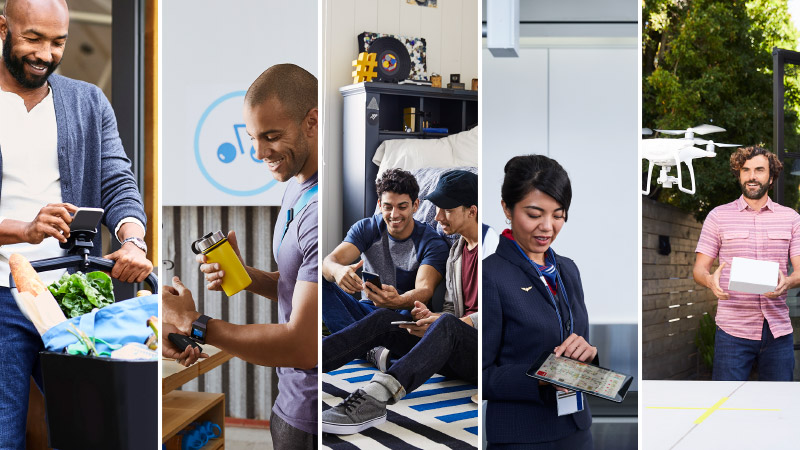
After years of warnings about the demise of retail, there’s one thing we now know for certain: rumors of the sector’s death were greatly exaggerated. Analysts predict this will be the first-ever $1 trillion shopping season[1], with new technologies helping retailers turn shopping lists into shopping experiences.
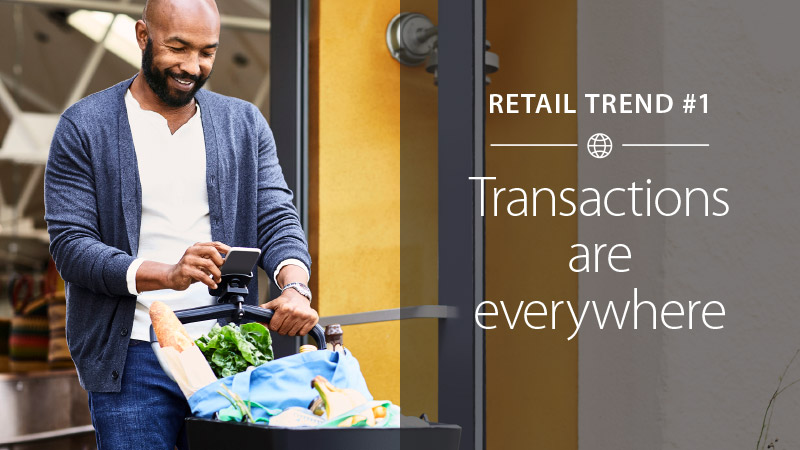
1. Transactions are everywhere
A centralized point of sale (POS) is oxymoronic in a world in which nearly every shopper has a smartphone, and by extension, a cash register in their pocket. Enter a radical new approach: ubiquitous points of purchase (POP). Innovative retailers encourage shoppers to take advantage of technologies to jump the line or make purchases autonomously, such as at digital-only express kiosks, in-store pick-up for online purchases, and other time-saving conveniences. Retailers are recognizing that saving consumers time can often be just as valuable as coupons.
New technologies can also clue retailers in to cues customers are sending about their preferences that empower sales associates to focus on customers rather than on the transaction-focused checkout line.
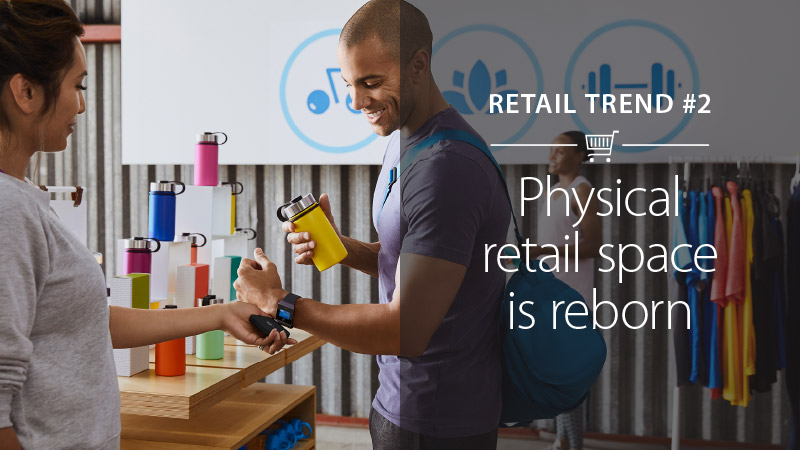
2. Physical retail space is reborn
If points of purchase (POP) are everywhere and sales happen at any time, the role of the physical store changes, too.
Understanding that people crave experiences, retailers have come to realize they can educate, inspire and entertain their customers more than they ever thought possible. Even digital-native retailers are continuing to see the value of opening physical locations. With the ability to blend physical and digital worlds, retailers can create memorable experiences for customers by keeping several ideas in mind:
- Exclusivity reigns supreme. At Hudson Yards, New York City’s newest neighborhood, Visa will promote “only at” payments experiences for visitors to the 100-plus shops and restaurants opening in March 2019.
- Space is mobile. Pop-up shops—short-term retail spaces—have become a $45-$50 billion business in the U.S. alone[2]. Retailers are testing everything from tricked-out shipping crates to spaces where experience and education are paramount, and purchasing is encouraged via eCommerce at a later time.
- New technology is creating new retail “spaces.” In the future, customers will have the choice to shop from the convenience of their living rooms via virtual reality. Retailers will also be able to offer infinite “digital shelf” space, vastly increasing options and inventory. And as the rise of commerce via voice-activated speakers continues, retailers have yet another “space” to consider how their brand operates.
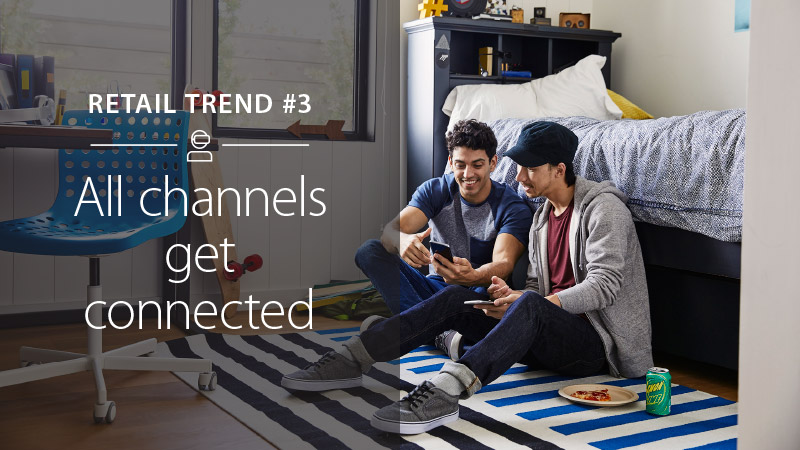
3. All channels get connected.
Customers have more ways than ever to connect with their favorite brands–online, in-store, through eCommerce, social media and even by flipping through catalogs—and smart retailers make those experiences easy and fluid. For example, a Brazilian retailer created “digital hangers” that show consumers the number of “likes” a product is getting on their eCommerce site.
Others offer the ability for customers to use their app to locate physical items in their stores and find out if they’re on sale. Retailers are coming to understand that since their consumers are always connected, they need to be too.
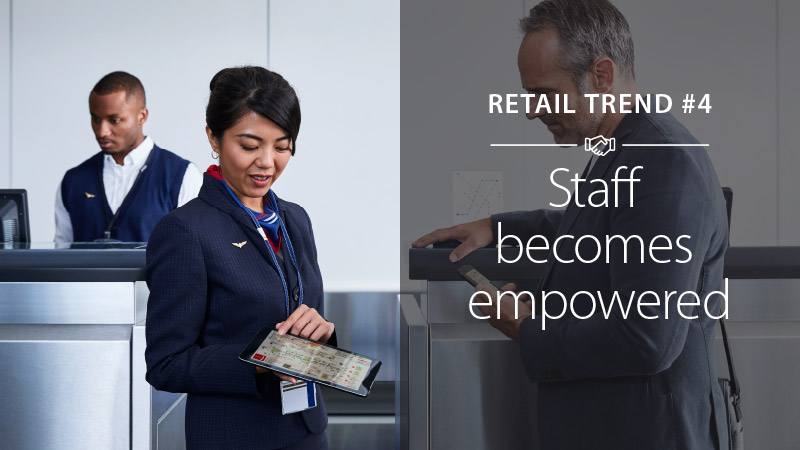
4. Staff is empowered
Eighty-three percent[3] of shoppers believe they know more about a retailer’s products and services than most store associates do. Thankfully, new robotics and machine vision (MV) technologies are automating many low-value tasks, forcing a broad shift in the training of in-store staff. The goal is to empower and re-deploy them in higher-value activities that customers can’t get from a machine.
In the future, sales associates will have contextual data systems that provide insights into the individual shoppers' interests and preferences, moving the entire retail experience towards more concierge-style service. This is already happening at many stores that don’t sell any products at all. The sales associates are there exclusively to educate and engage consumers on the products showcased in the store.
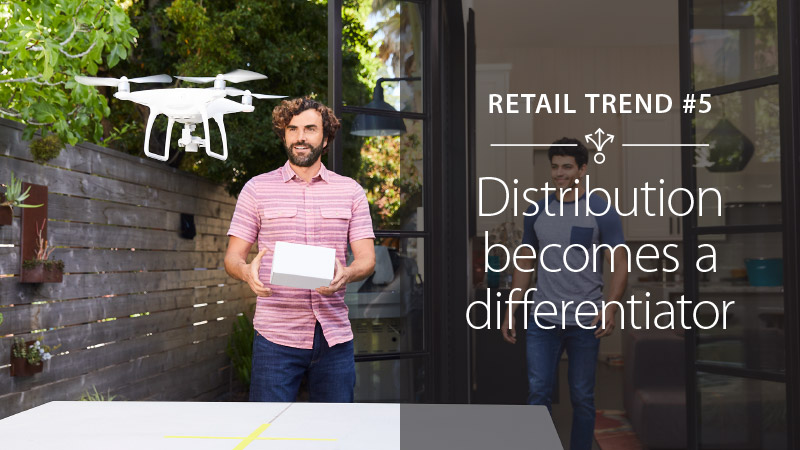
5. Distribution becomes a differentiator
Increasingly, the “last mile” of an online purchase is the most important one. How quickly and with what level of dependability an item gets in the buyer’s hands can be the determining factor for choosing one retailer over another.
The first stage of “on my terms” delivery came about with the rise of eCommerce, followed by “buy online, pick up in store.” The store pick-up evolved to curbside delivery outside the store and then to centralized locations where the customer chose to manage pick-up. A grocer in the U.K. offers a great example of delivery differentiation, with refrigerated lockers at transit stops.
The most successful retailers of this holiday season—and seasons to come—will make it effortless for consumers to find what they need and have it delivered on-time at the most convenient location.
___________________________________________________
[1] eMarketer, Holiday 2018 Forecast Update, November 2018
[2] Pop-up Republic, 2016